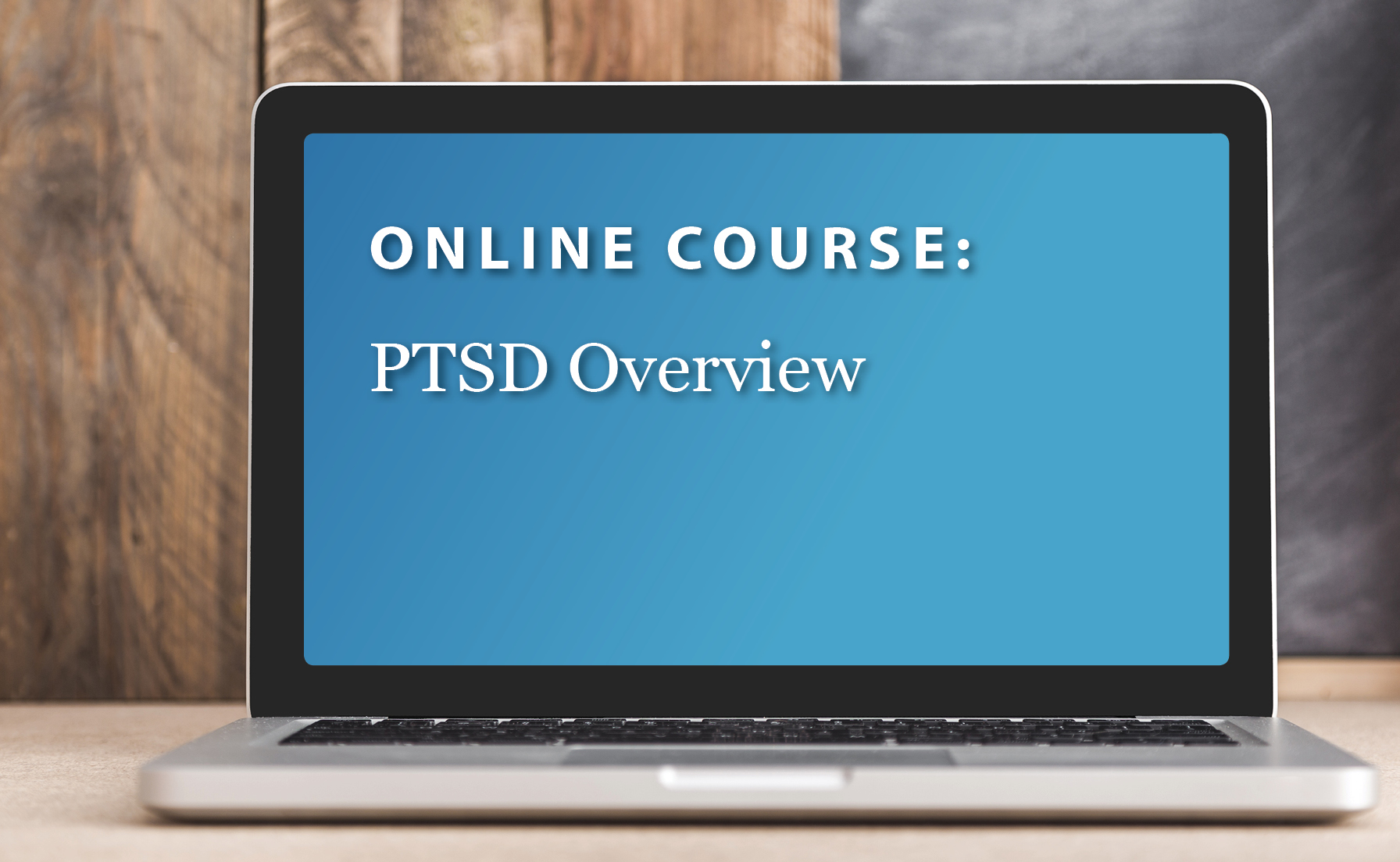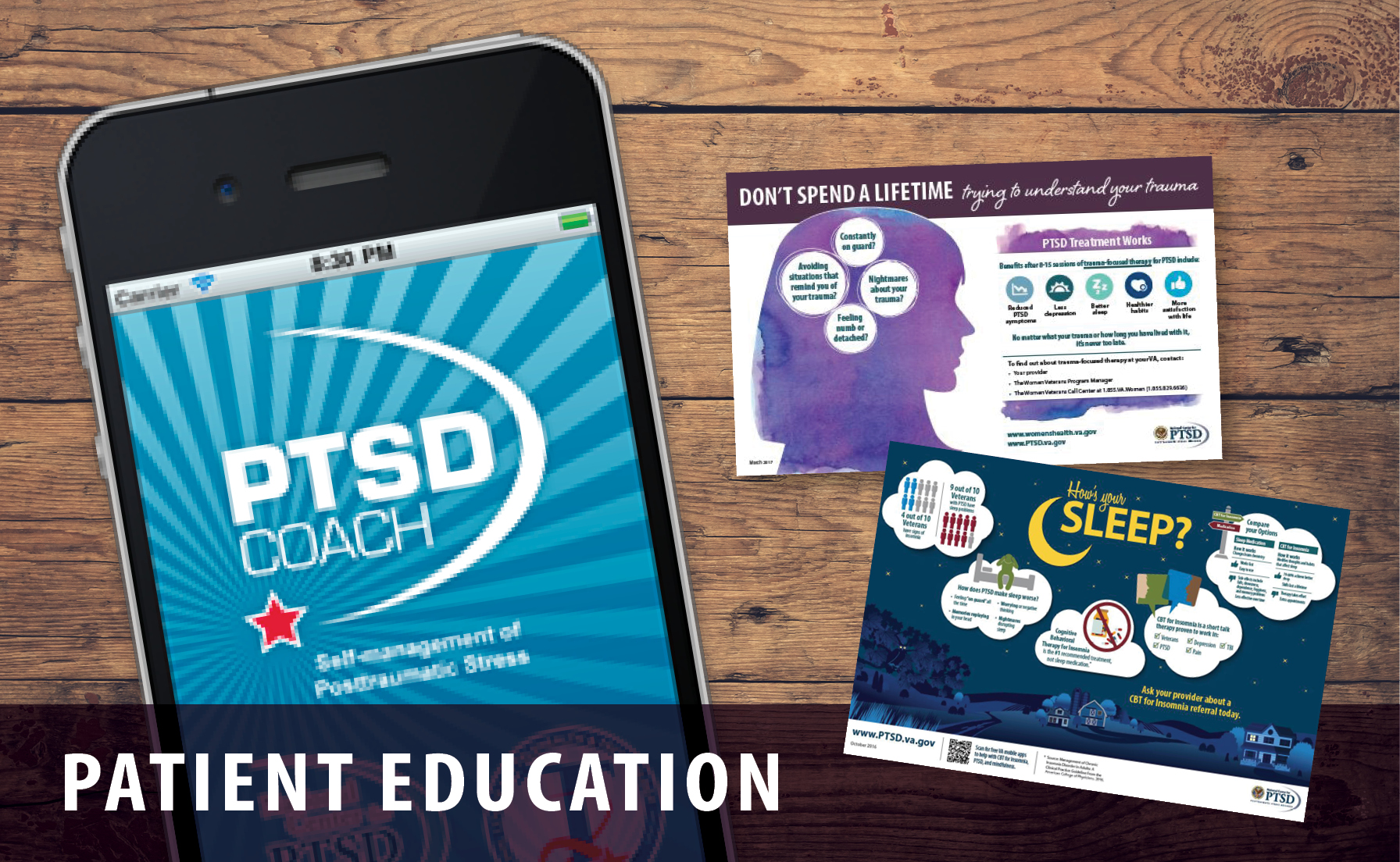Acute Stress Disorder
Acute Stress Disorder
What Is Acute Stress Disorder (ASD)?
Acute stress disorder, or ASD, was introduced into the DSM-IV in 1994. In DSM-5 (2013), ASD was reclassified in the Trauma- and Stressor-Related Disorders (1). A diagnosis of ASD has been integral in helping facilitate access to health care after trauma exposure. Debate continues regarding ASD as a predictor of posttraumatic stress disorder (PTSD; 2).
- The diagnosis of ASD can only be considered from 3 days to one month following a traumatic event (commonly referred to as the acute phase). If posttraumatic symptoms persist beyond a month, the clinician would assess for the presence of PTSD. The ASD diagnosis would no longer apply.
- ASD requires meeting criteria for at least 9 of the 14 symptoms (1).
How Do PTSD and ASD Differ?
ASD and PTSD share the same requirement for exposure to a traumatic event (Criterion A). Many of the ASD symptoms are similar to those for PTSD. Yet, ASD and PTSD differ in several important ways:
- PTSD diagnosis requires meeting a certain number of symptoms within established clusters. For ASD, symptoms are not classified within clusters; therefore an individual meets diagnosis based upon expression of symptoms in total.
- PTSD includes non-fear based symptoms (i.e., risky or destructive behavior, overly negative thoughts and assumptions about oneself or the world, exaggerated blame of self or others for causing the trauma, negative affect, decreased interest in activities, feeling isolated), whereas ASD does not.
- PTSD includes a <dissociative subtype>, whereas in ASD, depersonalization and derealization are included as symptoms under the dissociative heading.
See Bryant's (2016) comprehensive text on ASD (1) for a thorough discussion of the differences between ASD and PTSD.
In This Article
Is ASD Predictive of PTSD?
ASD is a risk factor for developing subsequent PTSD (1). However, not all individuals who meet criteria for ASD will go onto develop PTSD, and many individuals who develop PTSD do not first have an ASD diagnosis (3). Regardless of whether an individual goes on to develop PTSD, a diagnosis of ASD is important so that individuals experiencing early significant distress in response to a trauma can be identified and treated.
How Common Is ASD Following Trauma Exposure?
ASD prevalence rates vary in trauma exposed populations across studies and across different trauma types, with an average of 19% (1). Some trauma types are associated with higher rates of ASD than others. For example, prevalence estimates of ASD range from 13 - 21% following motor vehicle accidents and 14% after brain injury (5); to 24% following assault (6) and 59% following rape (7). Of note, these rates are based on DSM-IV ASD criteria. Currently, there are no prevalence estimates of ASD in adults using DSM-5criteria.
Who Is at Risk for ASD?
While many studies have examined factors that place individuals at risk for developing PTSD, only a handful of studies have examined risk factors for the development of ASD. Factors that elevate the risk of developing ASD are past psychiatric disorders, prior trauma, greater trauma severity, avoidant coping, high neuroticism, and being female (8). Trauma as a result of an assault is associated with a higher risk for developing ASD than other types of trauma (9,10).
How Is ASD Diagnosed?
There are few well-established and empirically-validated measures to assess ASD. The tools with the strongest psychometric properties are described below:
- The Acute Stress Disorder Structured Interview – 5 (ASDI-5, 1). The original ASDI (11) was developed and validated for the DSM-IV diagnostic criteria of ASD. The psychometric properties of the ASDI-5 which was updated for DSM-5, have not yet been studied.
- The Acute Stress Disorder Scale (ASDS, 12) is a 14-item self-report measure of ASD symptoms (1). It has been updated to be consistent with ASD in DSM-5, and psychometric studies of the ASDS for DSM-5 are not available to date.
What Are Effective Treatments for ASD?
Cognitive behavioral interventions
Clinical practice guidelines recommend trauma-focused CBT as a first-line treatment of ASD (13,14). Bryant and colleagues (11,15) have conducted the only studies that specifically assessed and treated ASD. They have shown that a brief trauma-focused cognitive behavioral treatment may not only ameliorate ASD, but it may also prevent the subsequent development of PTSD. Other research that assesses traumatic stress symptoms following acute trauma support this finding, showing that PTSD symptom severity is significantly lower at follow up (three to six months) after brief trauma-focused cognitive behavioral interventions (16-21).
There are a number of potential barriers to entering treatment in the early aftermath of traumatic stress. For instance, in post-disaster or military deployment environments, the basic needs and priorities of those exposed to trauma may preclude the time and energy to engage in treatment, and individuals may not be ready to identify themselves as someone in need of traditional mental health services.
While a number of studies have reported multiple barriers to entry into early CBT treatment for PTSD (22-26), the investigators strongly endorse that early clinical intervention should be offered, as it yields success in those who complete treatment, and results in markedly greater overall population impact. For instance, in one study, Shalev and colleagues (2012) reported that while about a third of those with initial PTSD recovered by 5 months, delaying treatment prolonged the duration of symptoms (24).
Psychological first aid
A number of psychological first aid (PFA) models have been developed to meet the needs in the early aftermath of disasters and traumatic stress (e.g., 27-29). PFA focuses on addressing initial needs and concerns by providing support and resources, and differs from traditional mental health services in that it is strengths-based, flexible, and has a supportive, psychoeducational -- rather than psychotherapeutic -- focus.
While PFA models have not received controlled empirical support to date (30-32), they are generally considered evidence informed, and are the strategies most appropriate and least likely to do harm as post-trauma early intervention (e.g., 33-36). Studies suggest that PFA is well-received by both providers and recipients. For instance, recipients of PFA in one study reported a heightened ability to be calm and to help themselves and others, a greater sense of emotional control, improved functioning, and strengthened family relationships (33).
Psychological debriefing
Psychological debriefing (PD) is not recommended after trauma exposure (13,37,38). PD is a structured group intervention for early implementation after potentially traumatic events, and it has been widely implemented in police, fire, emergency medicine, and military settings since its introduction (38). As a programmed group intervention, PD assumes that all individuals who have experienced the same traumatic stressor have similar needs.
Additionally, because it does not include an assessment component, it cannot be tailored for each person’s immediate status and context. Finally, those who implement PD often assume that a single session of help occurring over a few hours is sufficient, without either mandated follow-up or mechanisms for assessing who needs greater help.
Several reviews of studies of the efficacy of PD have failed to find evidence that it prevents long-term negative outcomes and two randomized controlled trials of PD have reported a higher incidence of negative outcomes in those who received PD compared with those who did not receive any intervention (e.g., 37,39,40).
References
- Bryant, R. A. (2016). Acute stress disorder: What it is and how to treat it. New York, NY: The Guilford Press.
- American Psychiatric Association. (2013). Diagnostic and statistical manual of mental disorders, (5th ed.). Washington, DC: Author.
- Bryant, R. A. (2011). Acute stress disorder as a predictor of posttraumatic stress disorder: A systematic review. The Journal of Clinical Psychiatry, 72, 233-239. doi:10.4088/JCP.09r05072blu
- Harvey, A. G., & Bryant, R. A. (1998). The relationship between acute stress disorder and posttraumatic stress disorder: A prospective evaluation of motor vehicle accident survivors. Journal of Consulting and Clinical Psychology, 66, 507-512. doi:10.1037/0022-006X.66.3.507
- Harvey, A. G., & Bryant, R. A. (1998). Acute stress disorder after mild traumatic brain injury. Journal of Nervous and Mental Disease, 186, 333-337. doi:10.1097/00005053-199806000-00002
- Elklit, A., & Brink, O. (2004). Acute stress disorder as a predictor of post-traumatic stress disorder in physical assault victims. Journal of Interpersonal Violence, 19, 709-726. doi:10.1177/0886260504263872
- Elklit, A., & Christiansen, D. M. (2010). ASD and PTSD in rape victims. Journal of Interpersonal Violence, 25, 1470-1488. doi:10.1177/0886260509354587
- Bryant, R. A. (2016). Acute stress disorder. In P. R. Casey & J. J. Strain (Eds.) Trauma- and stressor-related disorders: A handbook for clinicians (pp. 81-98). Arlington, VA: American Psychiatric Publishing, Inc.
- Brewin, C. R., Andrews, B., Rose, S., & Kirk, M. (1999). Acute stress disorder and posttraumatic stress disorder in victims of violent crime. The American Journal of Psychiatry, 156, 360-366.
- Harvey, A. G., & Bryant, R. A. (1999). Acute stress disorder across trauma populations. Journal of Nervous and Mental Disease, 187, 443-446. doi:10.1097/00005053-199907000-00009
- Bryant, R.A., Harvey, A.G., Dang, S., & Sackville, T. (1998). Assessing acute stress disorder: Psychometric properties of a structured clinical interview. Psychological Assessment, 10, 215-220. doi:10.1037/1040-3590.10.3.215
- Bryant, R. A., Moulds, M., & Guthrie, R. (2000). Acute Stress Disorder Scale: A self-report measure of acute stress disorder. Psychological Assessment, 12, 61-68. doi:10.1037//1040-3590.12.1.61
- Department of Veterans Affairs and Department of Defense. (2017). VA/DOD Clinical Practice Guideline for the Management of Posttraumatic Stress Disorder and Acute Stress Disorder. Washington DC: Author. Retrieved from: https://www.healthquality.va.gov/guidelines/MH/ptsd/
- Tol, W. A., Barbui, C., & van Ommeren, M. (2013). Management of acute stress, PTSD, and bereavement: WHO recommendations. JAMA: Journal of the American Medical Association, 310, 477-478. doi:10.1001/jama.2013.166723
- Bryant, R.A., Sackville, T., Dang, S.T., Moulds, M., & Guthrie, R. (1999). Treating acute stress disorder: An evaluation of cognitive behavior therapy and counseling techniques. American Journal of Psychiatry, 156, 1780-1786.
- Kliem, S., & Kröger, C. (2013). Prevention of chronic PTSD with early cognitive behavioral therapy. A meta-analysis using mixed-effects modeling. Behaviour Research and Therapy, 51, 753-761. doi:10.1016/j.brat.2013.08.005
- Forneris, C. A., Gartlehner, G., Brownley, K. A., Gaynes, B. N., Sonis, J., Coker-Schwimmer, E., Jonas, D. E., Greenblat, A., Wilkins, T. M. Woodell, C. L. & Lohr, K. N. (2013). Interventions to prevent post-traumatic stress disorder: A systematic review. American Journal of Preventive Medicine, 44, 635-650. doi:10.1016/j.amepre.2013.02.013
- Gidron, Y., Gal, R., Freedman, S.A., Twiser, I., Lauden, A., Snir, Y., & Benjamin, J. (2001). Translating research findings to PTSD prevention: Results of a randomized-controlled pilot study. Journal of Traumatic Stress, 14, 773-780. doi:10.1023/a:1013046322993
- Bryant, R. A., Harvey, A. G., Dang, S. T., Sackville, T., & Basten, C. (1998). Treatment of acute stress disorder: A comparison of cognitive behavioral therapy and supportive counseling. Journal of Consulting and Clinical Psychology, 66, 862-866. doi:10.1037/0022-006X.66.5.862
- Echeburua, E., deCorral, P., Sarasua, B., & Zubizarreta, I. (1996). Treatment of acute posttraumatic stress disorder in rape victims: An experimental study. Journal of Anxiety Disorders, 10, 185-199. doi:10.1016/0887-6185(96)89842-2
- Foa, E. B., Hearst-Ikeda, D., & Perry, K. J. (1995). Evaluation of a brief cognitive behavioral program for the prevention of chronic PTSD in recent assault victims. Journal of Consulting and Clinical Psychology, 63, 948-955. doi:10.1037/0022-006X.63.6.948
- Lowe, S. R., Fink, D. S., Norris, F. H., & Galea, S. (2015). Frequencies and predictors of barriers to mental health service use: A longitudinal study of Hurricane Ike survivors. Social Psychiatry and Psychiatric Epidemiology, 50, 99-108. doi:10.1007/s00127-014-0908-y
- O’Donnell, M. L., Lau, W., Tipping, S., Holmes, A. C. N., Ellen, S., Judson, R., Varker, T., Elliot, P., Bryant, R. A., Creamer, M. C., & Forbes, D. (2012). Stepped early psychological intervention for posttraumatic stress disorder, other anxiety disorders, and depression following serious injury. Journal of Traumatic Stress, 25, 125-133. doi:10.1002/jts.21677
- Shalev, A. Y., Ankri, Y. L. E., Israeli-Shalev, Y., Peleg, T., Adessky, R. S., & Freedman, S. A. (2012). Prevention of posttraumatic stress disorder by early treatment: Results from the Jerusalem Trauma Outreach and Prevention study. Archives of General Psychiatry, 69, 166-176. doi:10.1001/arcgenpsychiatry.2011.127
- Kearns, M. C., Ressler, K. J., Zatzick, D., & Rothbaum, B. O. (2012). Early interventions for PTSD: a review. Depression And Anxiety, 29, 833-842. doi:10.1002/da.21997
- Trusz, S. G., Wagner, A. W., Russo, J., Love, J., & Zatzick, D. F. (2011). Assessing barriers to care and readiness for cognitive behavioral therapy in early acute care PTSD interventions. Psychiatry: Interpersonal and Biological Processes, 74, 207-223. doi:10.1521/psych.2011.74.3.207
- Brymer, M., Jacobs, A., Layne, C., Pynoos, R., Ruzek, J, Steinberg, A., Vernberg, E., Watson, P. (National Traumatic Stress Network and National Center for PTSD). (2006). Psychological first aid: Field operations guide (2nd ed.). Retrieved from: http://www.nctsn.org; and, https://www.ptsd.va.gov.
- Australian Red Cross and Australian Psychological Society. (2013). Psychological first aid: An Australian guide to supporting people affected by disaster. Australian Red Cross and Australian Psychological Society. Sydney, Australia: Author. Retrieved from online PDF document. https://www.redcross.org.au/getmedia/23276bd8-a627-48fe-87c2-5bc6b6b61eec/Psychological-First-Aid-An-Australian-Guide.pdf
- International Federation of the Red Cross. (2009). Community-based psychosocial support: Training kit. Denmark: International Federation Reference Centre for Psychosocial Support. Retrieved from online PDF document. http://pscentre.org/topics/training-kit-publications/
- Shultz, J. M., & Forbes, D. (2014). Psychological first aid: Rapid proliferation and the search for evidence. Disaster Health, 2, 3-12. doi:10.4161/dish.26006
- Fox, J. H., Burkle, F. M. Jr., Bass, J., Pia, F. A., Epstein, J. L., & Markenson, D. (2012). The effectiveness of Psychological First Aid as a disaster intervention tool: Research analysis of peer-reviewed literature from 1990-2010. Disaster Medicine and Public Health Preparedness, 6, 247-252. doi:10.1001/dmp.2012.39
- Bisson, J. I., & Lewis, C. (2009). Systematic Review of Psychological First Aid. Report commissioned by the World Health Organization.
- Schafer, A., Snider, L., & Sammour, R. (2015). A reflective learning report about the implementation and impacts of Psychological First Aid (PFA) in Gaza. Disaster Health, 3, 1-10. doi:10.1080/21665044.2015.1110292
- Bisson, J. I., Tavakoly, B., Witteveen, A. B., Ajdukovic, D., Jehel, L., Johansen, V. J., Nordanger, D., Garcia, F. O., Punamaki, R. L., Schnyder, U., Sezgin, A. U., Wittmann, L., & Olff, M. (2010). TENTS guidelines: Development of post-disaster psychosocial care guidelines through a Delphi process. British Journal of Psychiatry, 196, 69–74. doi:10.1192/bjp.bp.109.066266
- Bryant, R. A., & Litz, B. T. (2009). Mental health treatments in the wake of disaster. In Y. Neria, S. Galea, & F. Norris (Eds.), Mental health consequences of disasters (pp. 321-335). New York, NY: Cambridge University Press.
- Inter-Agency Standing Committee (IASC). (2007). IASC guidelines on mental health and psychosocial support in emergency settings. Geneva: IASC. Retrieved from: http:/www.who.int/mental_health/emergencies/ guidelines_iasc_mental_health_psychosocial_june_2007.pdf
- Litz, B.T., Gray, M.J., Bryant, R.A., Adler, A.B. (2002). Early intervention for trauma: Current status and future directions. Clinical Psychology: Science & Practice, 9, 112-134. doi:10.1093/clipsy/9.2.112
- Nash, W. P., & Watson, P. J. (2012). Review of VA/DOD Clinical Practice Guideline on management of acute stress and interventions to prevent posttraumatic stress disorder. Journal of Rehabilitation Research & Development, 49, 637-648. doi:10.1682/JRRD.2011.10.0194
- Bryant, R. A. (2015). Early intervention after trauma. In U. Schnyder & M. Cloitre (Eds.). Evidence based treatments for trauma-related psychological disorders (pp. 125-142). New York, NY: Springer International Publishing.
- Sijbrandij, M., Olff, M., Reitsma, J. B., Carlier, I. V., & Gersons, B. P. (2006). Emotional or educational debriefing after psychological trauma: Randomised controlled trial. The British Journal of Psychiatry, 189, 150-155. doi:10.1192/bjp.bp.105.021121
- Westfall, N. C., & Nemeroff, C. B. (2016). State-of-the-art prevention and treatment of PTSD: Pharmacotherapy, psychotherapy, and nonpharmacological somatic therapies. Psychiatric Annals, 46, 533-549. doi:10.3928/00485712-20160808-01
- Fear, N. T., & Wessely, S. (2015). Prevention of the psychological consequences of trauma. The Lancet Psychiatry, 2, 367-369. doi:10.1016/s2215-0366(15)00159-5
- Sijbrandij, M., Kleiboer, A., Bisson, J. I., Barbui, C., & Cuijpers, P. (2015). Pharmacological prevention of post-traumatic stress disorder and acute stress disorder: A systematic review and meta-analysis. The Lancet Psychiatry, 2, 413-421. doi:10.1016/s2215-0366(14)00121-7
- Olff, M., Van Zuiden, M., Koch, S. B., Nawijn, L., Frijling, J. L., & Veltman, D. J. (2015). Intranasal oxytocin: miracle cure after trauma? European Journal of Psychotraumatology, 6. doi:10.3402/ejpt.v6.27631
- Koch, S. B., van Zuiden, M., Nawijn, L., Frijling, J. L., Veltman, D. J., & Olff, M. (2016). Intranasal oxytocin normalizes amygdala functional connectivity in post-traumatic stress disorder. Neuropsychopharmacology, 41, 2041-2051. doi:10.1038/npp.2016.1
You May Also Be Interested In

PTSD 101: PTSD Overview
This PTSD 101 online course describes the DSM-5 diagnostic criteria, risk factors, and evidence-based treatments for PTSD.

























